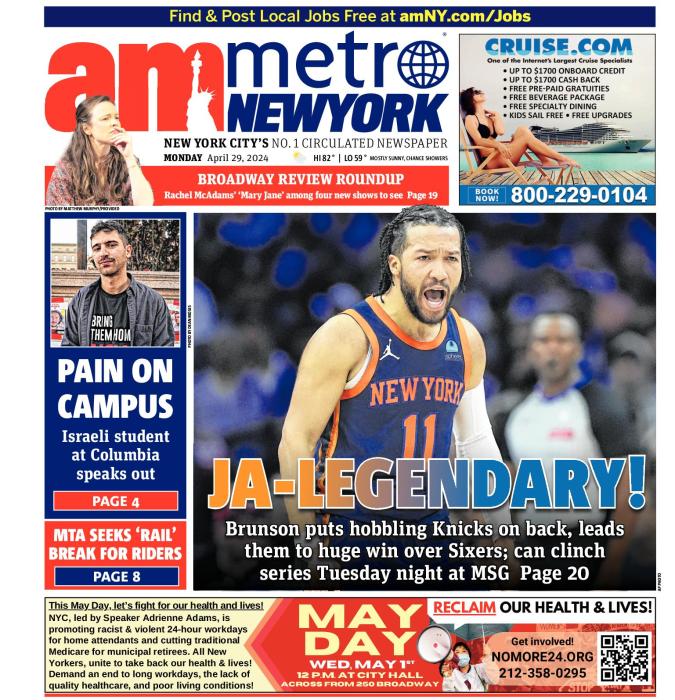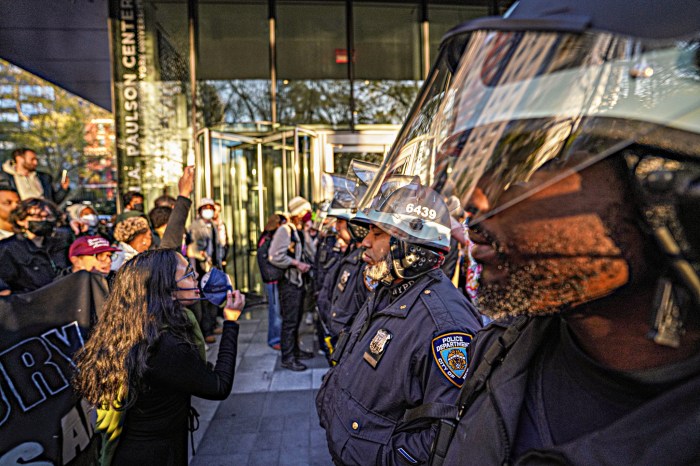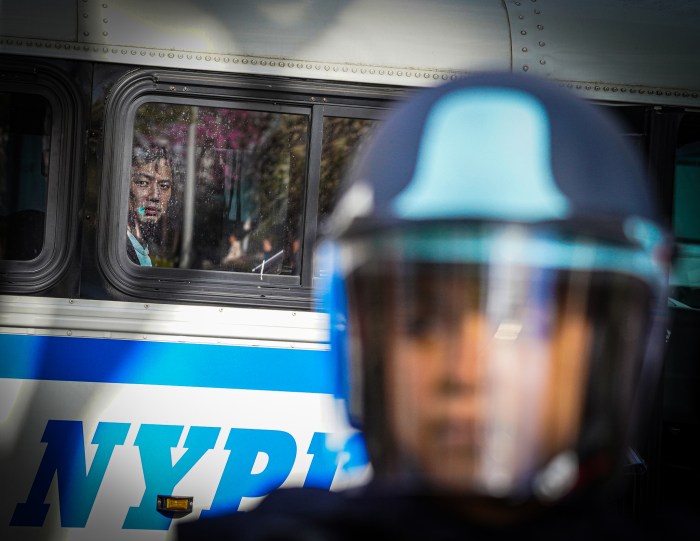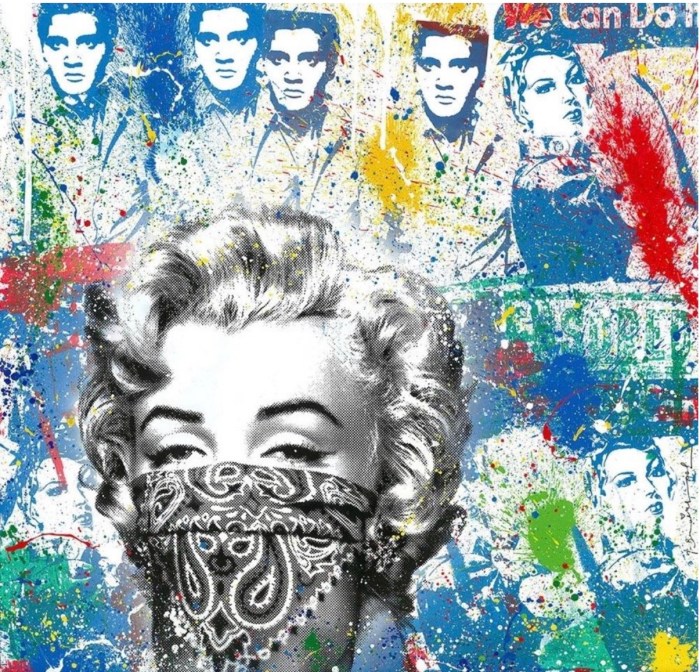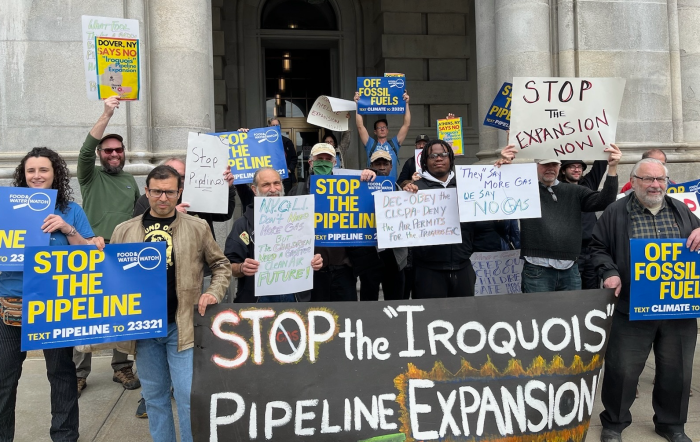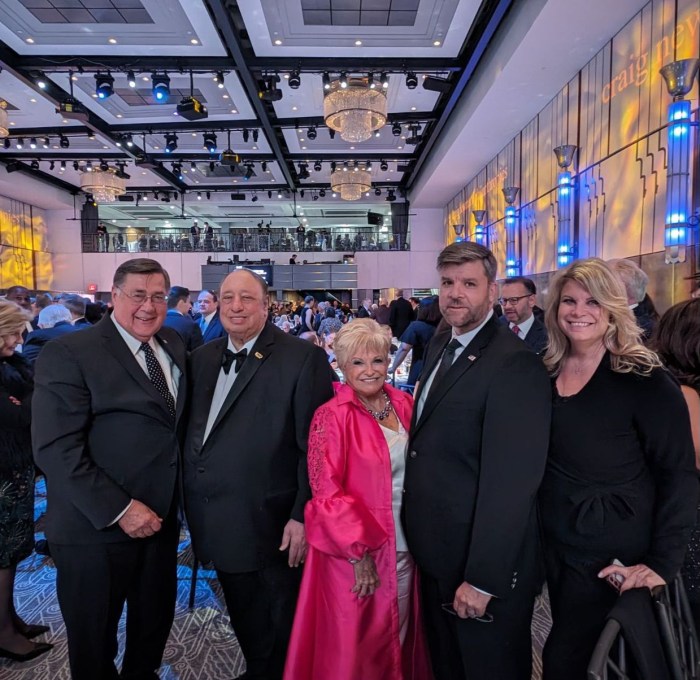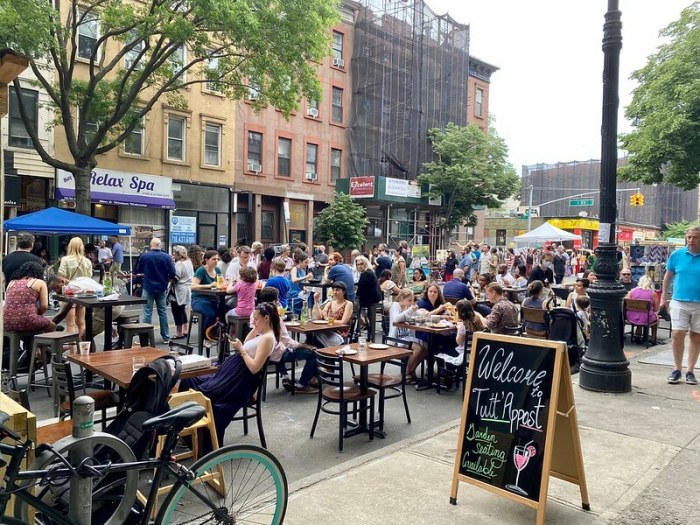By Bonnie Rosenstock
“Gonna take a walk down Union Square. You never know who you’re gonna find there,” sang Lou Reed (from the song, “Run, Run, Run” on “The Velvet Underground & Nico” album) back in the group’s drug-addled prime and when one incarnation of Andy Warhol’s The Factory was located at 860 Broadway on the west side of the square. These days one thing you are sure to find there every Saturday at 2 p.m. is a free walking tour, “Union Square: Crossroads of New York.”
Since November 2007, the tour, sponsored by the Union Square Partnership in close collaboration with Big Onion Walking Tours, has been “an overwhelming success,” declared Jennifer Falk, executive director of U.S.P. “We went from having just a few people attending to averaging well over 30 per tour. On one of the coldest days of the year, we had almost 50 people.
“One of the great things about partnering with Big Onion is you don’t get the same tour every time because tour guides rotate,” Falk said. “Come one week and hear about early 19th-century history, and another time, the focus may be on more recent history, like the 1970s. In order to keep attendance high and the material fresh, the tour guides constantly shake things up a bit.”
Big Onion has a stable of around 40 guides with advanced degrees in American history or a related field. On last Saturday’s tour, attended by about 25 tourists from all points abroad, from other states and one local denizen, the guide was Stephen Petrus. Petrus is finishing up his doctoral dissertation on the political and cultural history of Greenwich Village from the mid-1950s to the mid-1960s at CUNY Graduate Center.
Petrus narrated the park’s ever-evolving history from when it was originally made to attract the middle class to the area (in 1839), remade (into a theater district by the 1870s), reshaped (ushering in the era of discount stores, like Klein’s), regressed (the “Needle Park” period of the 1960s and 1970s), resurgent with the Greenmarket, reinvented by large chains like Starbucks, Barnes & Noble, Staples and Whole Foods Market, to the current renovations going on at the square’s north end to triple the playground’s size and restore the pavilion. He also talked about Union Square as a place, beginning in the late 19th century, of labor rallies, political protests and vigils, and pointed out historic sites, sculptures and monuments within and around the park.
One noteworthy fact was learning the origin of the square’s name itself. The most common fallacy is that it was named for the labor movement that used the park as a gathering place for speeches and demonstrations. In 1882, the nation’s first Labor Day parade ended here after marching up Broadway from City Hall; in 1997, the park was designated a National Historic Landmark to commemorate that event. However, the “Union” in Union Square neither derives from the Civil War nor any association with labor, but because this was the point of union of the Bowery Road with a northbound road (now called Broadway).
The tour meets at the Lincoln statue at the north end of the park. Petrus explained that this remarkable statue was the first to be executed of Lincoln, in 1869, four years after his assassination. At the time, it was not well received because the beloved president was depicted too true to life. The later, idealized Lincoln Memorial in Washington, D.C., was more in keeping with the public’s desires.
“We’re hoping that not only tourists and visitors to New York City come on the tour but that residents and employees in the district also will experience it,” said Falk. “We want them to walk away with a deep appreciation of Union Square’s rich history and a greater knowledge about how the district has changed and what are some of the elements that have contributed to that success. We want the tour to be something that the community can be really proud of.”
Additional walking tour times can be arranged for companies, individuals and schools for a small fee.
